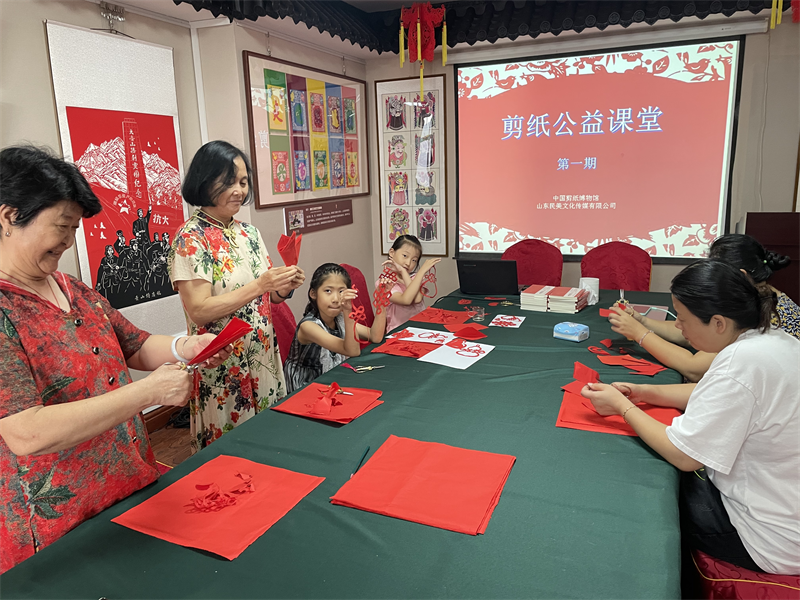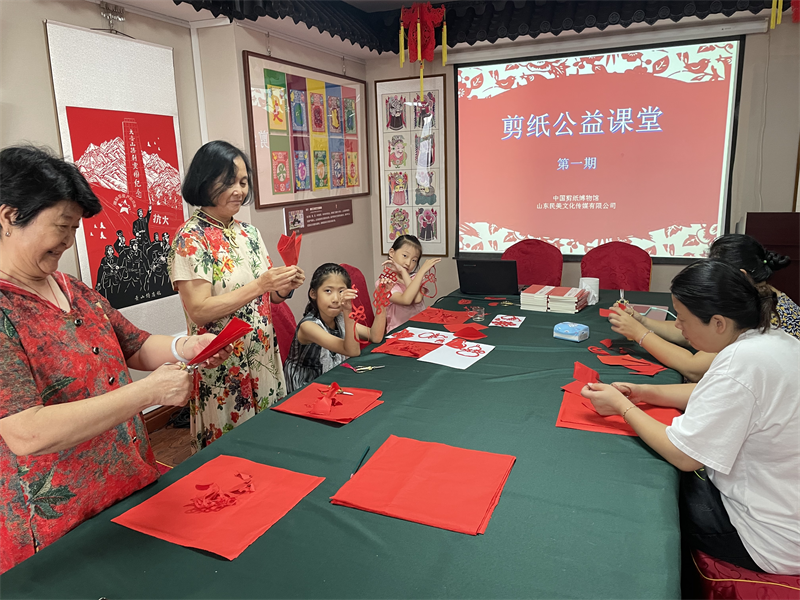
BEIJING, Nov. 9 (Xinhua) -- For those who want to learn the charm of Linyi, an ancient city with unique cultural heritage in east China's Shandong Province, a visit to Linyi-Chinese paper-cutting art museum is a must.
Paper-cutting is a traditional Chinese folk art of cutting red paper into patterns with scissors or carving knives. The works created then are used as decorations, which are present throughout China and in various ethnic groups as an integral part of folkways.
In 2009, paper-cutting with a history of thousands of years was inscribed in the UNESCO Representative List of the Intangible Cultural Heritage of Humanity.
The Linyi-Chinese paper-cutting art museum located in the Daguanyuan community, Lanshan district of Linyi, is a public museum built with private investment.
Covering an area of more than 400 square meters, this museum displays the history of paper-cutting, time-honored paper-cutting works for export, exquisite works of representative paper-cutting masters, innovation and development of modern paper-cutting art in different exhibition areas, showing the flavor of the times and the characteristics of the Chinese nation.
Linyi has nurtured generations of paper-cutting craftmen, who use simple raw materials and tools to express their appreciation of beautiful life.
Paper-cutting works are rich in cultural and historical connotations, as they express people's social values, life experience and ideals, Chu Chunju, director of the paper-cutting art museum of Linyi.
Based on the museum, paper-cutting has been promoted in the campuses and communities of Linyi, attracting more and more people to learn about the traditional art and create art works.
Zhao Ruixue, a housewife in her early 30s, joined her mother in a paper-cutting public non-profit course shortly after giving birth to her baby. At present, she not only crafts her own paper-cutting works, but also becomes a champion of the training course to spread the art of paper-cutting to young people.
Zhao said that paper-cutting is not only an art for her, but also an embodiment of the love for love and the desire for a better future. (Edited by Su Dan with Xinhua Silk Road, sudan@xinhua.org)




 A single purchase
A single purchase









